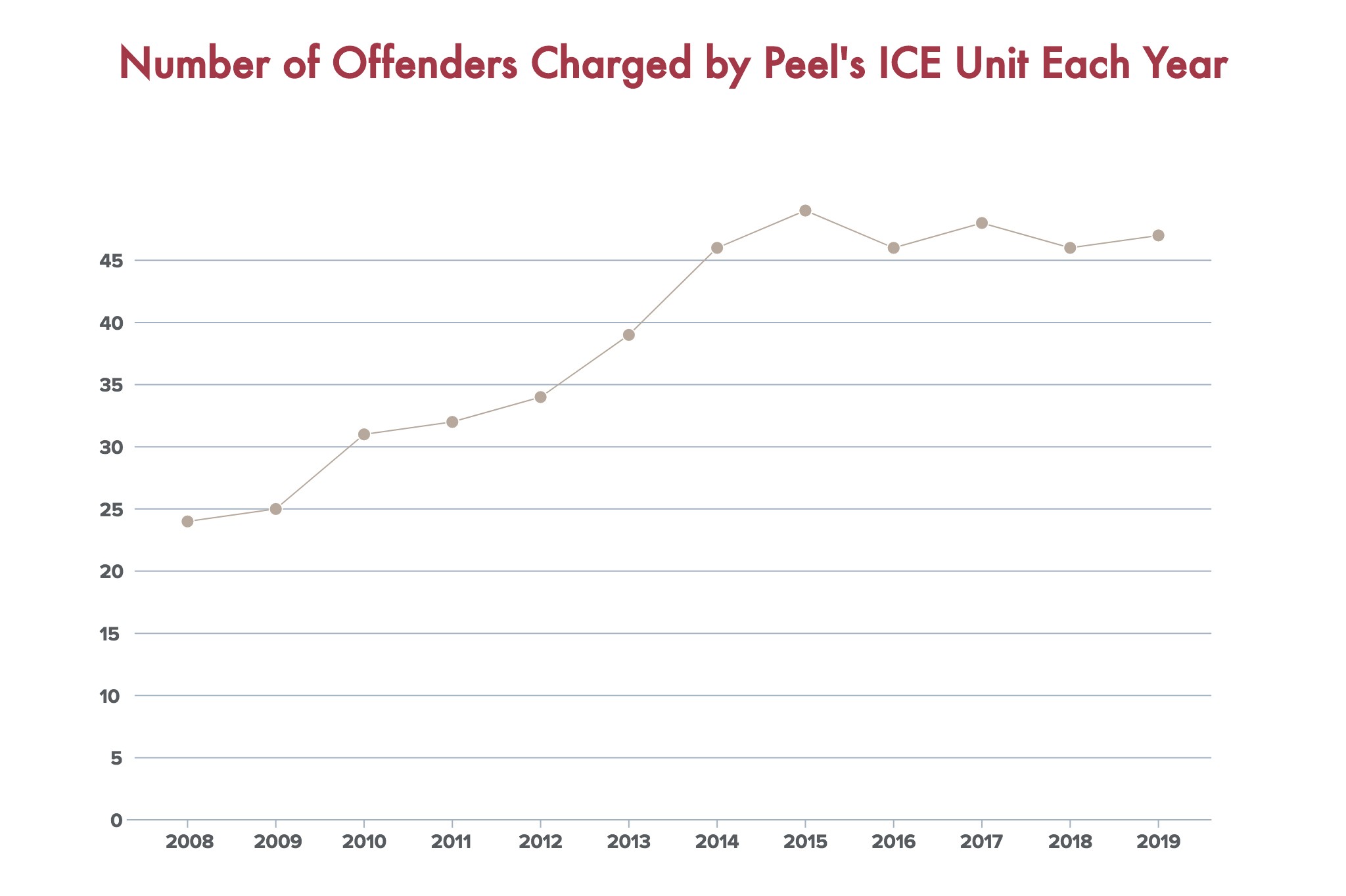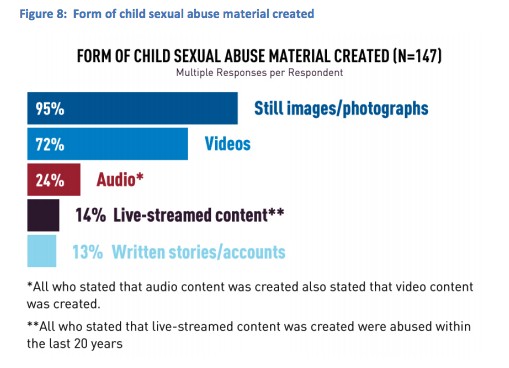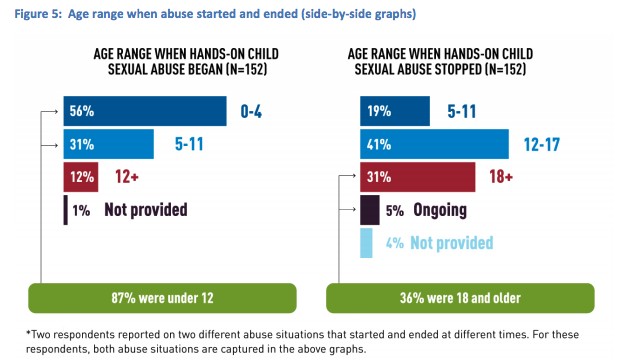
Evidence of child exploitation in Peel has increased almost 400%; defunding the already under-resourced police unit would put more victims at risk
The amount of potential child sexual exploitation online is growing exponentially, and Peel police’s Internet Child Exploitation Unit just can’t get to it all.
Over the last five years the unit has hit a ceiling for how many investigations it can manage each year, leading to the arrest and prosecution of about 50 offenders annually.
While this number has remained steady, the amount of evidence the ICE unit is reviewing each year has escalated at a disturbing pace. In just three years, the amount of images and videos suspected of showing child sexual exploitation reviewed by Peel’s ICE team has increased 373 percent, resulting in the cataloguing of hundreds of thousands of unique videos and millions of images, but because of limited resources the unit can do little to increase the numbers of investigations and arrests, which have remained consistent, even though the evidence has almost quadrupled.

Child sexual exploitation online is reaching crisis levels, and for years, many organizations have tried to warn the public and policy makers.
The Canadian Centre for Child Protection has repeatedly tried to prod the Canadian public into action.
In the fall of 2017, the Centre released a report with the potential to shake the country to its core. The nearly 400-page document told the stories of 150 survivors of child sexual abuse and exploitation.
Through a detailed survey and first-hand accounts, the Centre laid out the horrific reality of fear, shame and guilt that plague survivors and the problems that infect the criminal justice system and hamper attempts to track down and hold perpetrators accountable. The findings of the International Survivor’s Survey are stomach turning.
- 56 percent of survivors indicated the abuse began before the age of 4
- 42 percent were abused for more than 10 years
- Nearly 50 percent were subjected to organized sexual abuse (abuse by multiple offenders)
- 82 percent of primary offenders were parents or extended family
- 20 percent of survivors reported having been identified by their child sexual abuse imagery that ended up on the internet
In a message intended to speak directly to survivors, the authors of the report said:
“Please know that our team is working hard to make positive change happen for you and for future generations of survivors. We believe change is coming.”
Despite the impact of these first person accounts, and calls for the public to get educated, pay attention to the issue and support survivors facing severe societal struggles, both physical and emotional, there was little to no action taken.
Many in the Canadian public, who have never been sexually assaulted or exploited, and have never had a child who has been sexually abused, just don’t connect with the disturbing subject matter.
Last year, the Centre tried again. In How We Are Failing Children: Changing the Paradigm, the organization — at the epicentre in the battle against child abuse and online exploitation in Canada — made it quite clear where change needs to happen.
As much as the government, police organizations and internet service providers need to be the Three Musketeers when it comes to fighting this problem, the Centre’s report doesn’t let the general population off the hook. These crimes are happening at a large scale, right in our backyards and inside the various apps and platforms many access on a daily basis. Yet, the disturbing, taboo nature of sexual abuse keeps it from getting mainstream engagement, and prevents it from getting the attention it needs to effect real change.
“Society has the power to demand change,” the report states.
Looking to the streets in cities across the world right now, this power of the people is on full display.
Following the death of George Floyd after a now former police officer in Minneapolis killed him, demonstrations erupted, demanding first the arrest and indictment of the four officers involved (done) then the revamping of Minneapolis police (done).
The broader movement has sparked calls for “defunding” police organizations across Canada and the globe, a movement that seeks to shift tax dollars from bloated police budgets and reallocate them into social programs to help lift people out of poverty and offer support programs for things like housing, food security, youth engagement, employment assistance and mental health and addictions programming.

Demonstrators march in Brampton during a rally last month.
It’s a movement that is supported by strong economic benefits — for example, studies have shown that for every $1 put into youth programming, $25 is put back into the local economy — but made difficult by the fiscal realities of municipal policing budgets.
In Peel, 94 percent of the 2020 operating budget for Peel Regional Police is locked into fresh labour contracts that are not up for renewal for three years. This leaves only 6 percent of the budget for additional programming and new initiatives.
For a fast growing region like Peel, this creates an incredibly difficult problem. Peel is not only dealing with complex crime dynamics as a result of its expanding population and its proximity to major highways and Pearson International Airport, but there is also a dire need to invest in crucial social programs like affordable housing and mental health assistance. Low funding levels for both have created a crisis across much of Peel.
These opposing forces create a tug-of-war for local politicians who only have so many tax dollars to give, often funding certain needs at the expense of others.
In the case of the Peel Regional Police’s Internet Child Exploitation (ICE) unit, it offers an interesting case study while the public increasingly expects heinous, complex crimes to be confronted as many also demand sweeping police reforms and reduced budgets.
Detective Andrew Ullock, the head of PRP’s ICE team won’t say he doesn’t have enough resources, but he knows that with more officers, they would catch more abusers. A look at the successful apprehensions for Peel’s ICE unit over the last several years, shows it has clearly reached a ceiling, despite a 373 percent increase in evidence over three years.
Between 2004 and 2012, Peel’s ICE unit continuously increased its arrest record, from 24 individuals charged to 34. By 2014, the number of apprehensions increased to 46. However, over the last five years, things have flatlined, with 49 people charged in 2015, 46 in 2016, 48 in 2017 and 46 in 2018. In 2019, 47 people were charged in connection to child sexual abuse material investigated by Peel’s ICE unit.
“It is evident there has been a levelling off in the number of persons charged by the unit,” reads a report that went before the Peel Police Services Board last month, which pointed to an “exponential growth in cases” and an increasing complexity to these investigations as part of the challenge behind the flattening number of charges.
The figures suggest a consistent number of people committing child sexual exploitation crimes, but this is far from the reality.
Between 2018 and 2019, Peel’s ICE unit saw a 253 percent increase in referrals from the National Child Exploitation Crime Centre (NCECC), operated by the RCMP, which takes reports of potential child sexual abuse material found online and sends them to the police organizations in those jurisdictions. In 2018, Peel received 156 referrals, a number that jumped to nearly 400 in 2019. It’s a trend seen across Canada, NCECC saw a 566 percent increase in the number of reports received between 2015 and 2018.
The hard truth is that more offenders are out there, and Peel Police just does not have enough resources to capture all of them.
“In a perfect world I’d like to be able to go after all offenders,” Det. Ullock tells The Pointer. “At some point we run out of resources to do it, and it doesn’t mean that if I get a whole bunch of occurrences this year and I can’t get to them all that that person will never get caught,” he says. “There is a finite amount of resources and we’re trying to deal with what, for all intents and purposes, is an infinite problem.”

A survey of 150 survivors of child sexual exploitation found disturbing trends of abuse, with abusers documenting their actions in various forms.

The vast majority of children are under the age of 12 when the abuse begins, typically at the hands of a family member.
Looking at Peel Police’s efforts to apprehend offenders, solely based on the numbers, it makes perfect sense to hire more officers for the unit. With seven investigators currently, each one is able to catch approximately seven predators each year. So, bringing in another investigator could result in the apprehension of seven more offenders.
However, police organizations, in many respects, are like a house of cards. If you add a piece in one place, you need to add another someplace else to support it. In the case of the ICE unit, which works closely with the PRP Digital Forensics Unit (DFU) to unlock and process seized computers and devices, if Det. Ullock adds to his unit, it increases the workload for DFU, meaning an additional body will be needed there as well. Further down the line, court services will also need further support as more investigations means more charges, more cases and more trials.
Due to the seriousness of these crimes, Det. Ullock says they take up a lot of officer time as trials are lengthy and heavily litigated. Late last month, Peel Police won the second appeal on an ICE unit conviction for a 26-year-old medical student caught by an undercover ICE officer trying to meet up with an underaged girl for sex. That man, who says he was entrapped by Peel officers, is reportedly now trying to take his case to the Supreme Court.
It’s a legal conundrum police forces across North America have grappled with for decades, and one that not a single organization has been able to overcome. Traditionally, when dealing with increasing crime, police organizations have added more officers. A “fighting fire with fire” mentality.
The approach is fraught with problems as crime statistics can be fickle, influenced by a confluence of factors year to year, and can be self-perpetuating with more officers catching more criminals and pushing the crime rates higher.
Det. Ullock is not depending on additional hires, though he would certainly welcome them.
“I don’t need to be shy about it, one of the solutions is more people, but that’s something that my senior officers and my chain of command, they’re the ones who allocate who goes where,” he says. “My job is I give them my workload and I say this is what I’m dealing with.”
As the internet has expanded with new apps, websites, video platforms and all types of content that proliferates by the minute, so too has the ability to store digital content virtually or in the “cloud”.
This emergence of storage technology has been a boom for those who trade in child sexual abuse material, creating massive workload demands on ICE units.
“In 2010, ICE investigators dealt with megabytes and gigabytes, in 2020, they deal with gigabytes and terabytes,” a recent Peel police staff report reads.
The growth in the sheer volume of potential child pornography reviewed by the ICE unit is startling. Despite the number of charges remaining consistent over recent years, the level of abusive material produced annually has skyrocketed.
In 2016, ICE arrested 46 individuals and analyzed 3.2 terabytes of data. Last year, ICE arrested 47 individuals, but seized and analyzed 12 terabytes of data, a 373 percent increase in data volume, which represents all the extra evidence that is flooding in. For context, a single terabyte is equivalent to the space available on over 725,000 floppy discs, or nearly 1,500 CD-ROMs.
“Large collections of child sex abuse material measured in the past in tens of thousands are now described in the hundreds of thousands,” the ICE report states.
In 2019, ICE investigators categorized 166,000 unique videos, and 2.35 million unique images. Peel police is unable to say how much of this material surpassed the Criminal Code definition of child pornography.
“When we go into a house, we do a search warrant, we take whatever computers we think will potentially have evidence, not all of those computers do,” Det. Ullock explains. “Some people are digital pack rats.”
Now, calls for police defunding from many who have little understanding about the increasing demands on policing as new threats emerge in an increasingly organized, global and technology-based criminal environment, pose another challenge. Some in the public, many politicians and members of police boards have been swept up by community pressure, meanwhile Det. Ullock is planning to work with what he has and find faster ways to do the job with his current staffing complement.
“Throwing people at it does that help? Absolutely, but if I had another person I still would like to get more than just another seven (offenders) because, my ultimate goal and some of the things we’re working towards is, instead of taking a month or so to process a suspect and a case, to be able to do it in days.”
This “doing more with less” or “finding efficiencies” approach is becoming common language within municipalities that have found themselves dealing with increasing responsibilities, as a result of federal and provincial downloading, without the increased revenue to pay for needs such as housing.
In the face of the “defund the police” movement, this efficiency hunting may be the only way to deal with complex crimes, if thinner budgets become a reality.
But if more criminals become emboldened by a lack of enforcement and more and more children are victimized, calls to defund might be met with brutal examples of the consequences. If rates of certain crimes dramatically increase, especially acts such as the abuse of children, many now calling for cuts to policing might quickly change their stance.
For the ICE unit, efficiencies could come in the form of triage, training and technology, which Det. Ullock says are three key areas he will be focusing on in coming months.
Training will assist in prioritizing cases so that the most heinous crimes and those prolific offenders who collect and disseminate large volumes of child sexual abuse material are confronted first.
“Time is a finite resource and the ICE unit will strive to spend it in a way that best protects the public,” the recent PRP staff report says.
“There are some technology tools, but there’s also some human resource tools. We’ve got to train people. We’ve got to take police officers, many of whom do not have extensive backgrounds in computers and technology and make them comfortable with this stuff, make them understand how all of this stuff works and what they can do themselves to sort of empower them,” Det. Ullock explains.
New tools to triage the sheer volume of data seized is also crucial for a unit with finite resources.
Entering the home of suspected offenders, it is the role of the ICE unit to seize any computer or electronic device suspected of having child sexual abuse material on it.
“It’s not just making sure we get all of the illegal material, but we also need to understand the scope of the offence,” Det. Ullock says. “So how long has this person been doing this? So if they have an old computer from 10 years ago that’s filled with child porn, well there’s an indication that this person is quite dedicated as opposed to someone who got into it last year.”
Additional training will come in the form of both in-house courses and those offered by the RCMP. Peel’s ICE unit is also working with the Digital Forensics Unit to update technology to better tackle encrypted files and secure mobile devices.
At the same time, the ICE unit also works “upstream” educating parents, community groups and children about the dangers of the internet and how to protect young kids when they’re online, so they never get lured into criminal activity.
“The best law enforcement is the kind that prevents things from even happening in the first place,” Det. Ullock says. “We can only reach so many people and communication is a full time job and outreach is a full time job.”
The Peel Police Services Board has yet to make clear how it plans to tackle the issue of reforming Peel Regional Police or how it intends to address next year’s budget, aside from mayors Bonnie Crombie and Patrick Brown saying the budget discussions will be viewed through a “different lens.”
What that means for the ICE unit and its ongoing fight against child exploitation online, has yet to be determined.
Email: [email protected]
Twitter: @JoeljWittnebel
COVID-19 is impacting all Canadians. At a time when vital public information is needed by everyone, The Pointer has taken down our paywall on all stories relating to the pandemic and those of public interest to ensure every resident of Brampton and Mississauga has access to the facts. For those who are able, we encourage you to consider a subscription. This will help us report on important public interest issues the community needs to know about now more than ever. You can register for a 30-day free trial HERE. Thereafter, The Pointer will charge $10 a month and you can cancel any time right on the website. Thank you.
Submit a correction about this story


